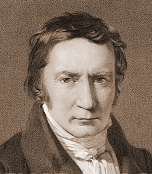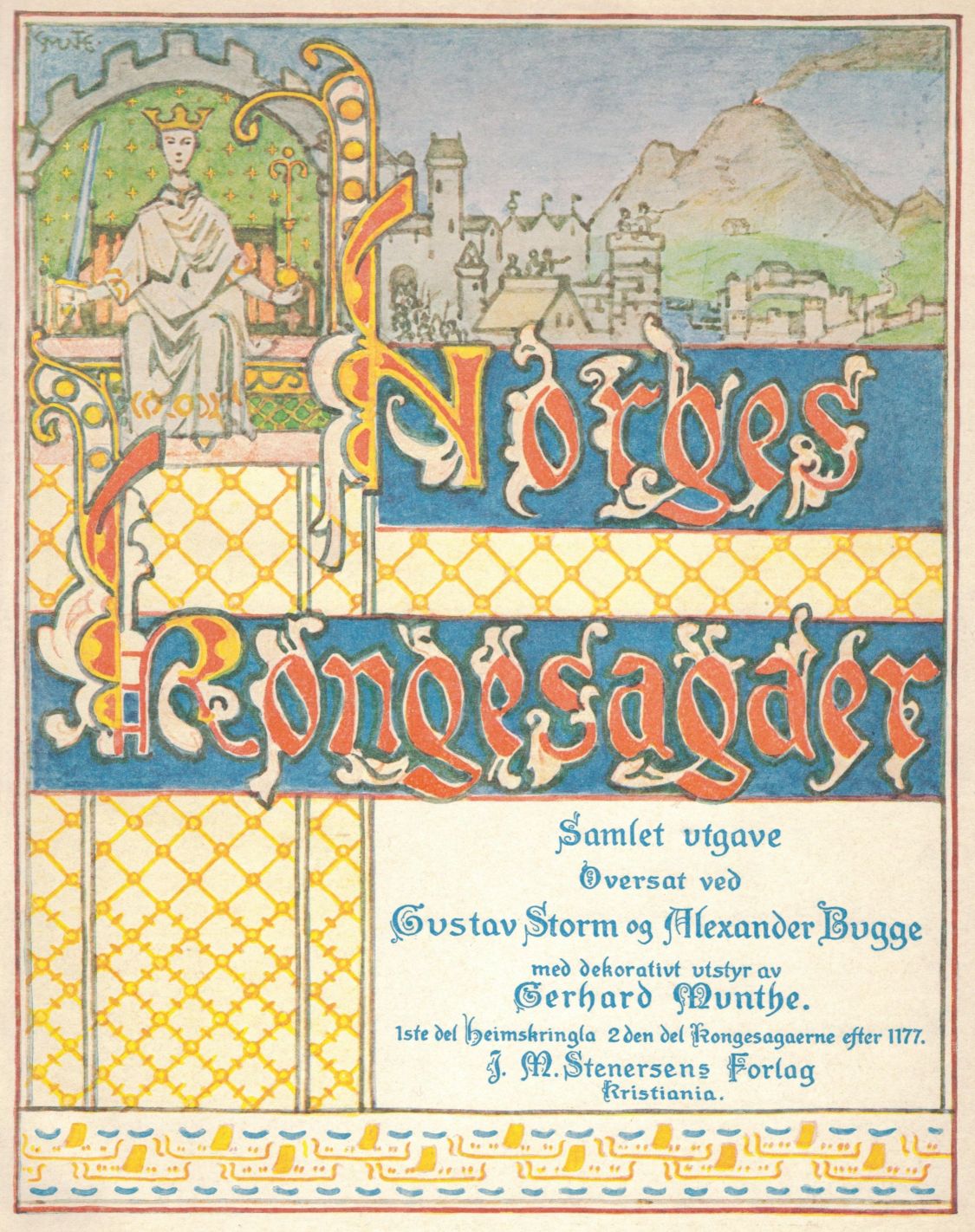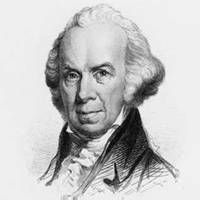|
Finnur Magnússon
Finnur Magnússon, sometimes referred to by the Danish version of his name under which he published, Finno Magnusun, Finn Magnussen or Magnusen, (27 August 1781 – 24 December 1847) was an Icelandic scholar and archaeologist who worked in Denmark. Biography Finnur Magnússon was born in Skálholt, Iceland. He was the grandchild of Finnur Jónsson, Bishop of Skálholt.Jón Helgason"Magnússon, Finnur" '' Dansk Biografisk Leksikon'' November 1938, volume 15, p. 234. (pdf) He claimed descent from Ári Marsson, who according to the ''Landnámabók'' discovered ''Hvítramannaland'' near Vinland. Finnur studied law at the University of Copenhagen and returned to Iceland to work in Reykjavík, where he became a clerk in the superior court in 1806.''Finnur Magnusson: Biografi'' at kalliope.org. ... [...More Info...] [...Related Items...] OR: [Wikipedia] [Google] [Baidu] |
Carl Christian Rafn
Carl Christian Rafn (January 16, 1795 – October 20, 1864) was a Danish historian, translator and antiquarian. His scholarship to a large extent focused on translation of Old Norse literature and related Northern European ancient history. He was also noted for his early advocacy of the recognition of Norse colonization of North America. Biography Carl Christian Rafn was born in Brahesborg on the island of Fyn in Funen County, Denmark. After attending the Odense Cathedral School (''Odense Katedralskole''), he entered the University of Copenhagen where he earned his law degree and graduated (1816). After having been employed as a lieutenant with the Funen light dragoons in Odense, in 1820, he became a teacher in Latin and grammar at the Army Cadet Academy (''Landkadetakademiet'') in Copenhagen. Rafn was particularly interested in discovering the location of Vinland as mentioned in Norse sagas. Together with Icelandic scholar Finnur Magnússon and Danish linguist Rasmus Rask, ... [...More Info...] [...Related Items...] OR: [Wikipedia] [Google] [Baidu] |
Runamo
__NOTOC__ Runamo is a cracked dolerite dike in Sweden that was for centuries held to be a runic inscription and gave rise to a famous scholarly controversy in the 19th century. It is located 2.7 km from the church of Bräkne-Hoby in Blekinge, in South-Sweden. For hundreds of years people said it was possible to read an inscription, and learned men referred to it. As early as the 12th century, the Danish chronicler Saxo Grammaticus reported in the introduction to his ''Gesta Danorum'' that the runic inscription was no longer legible being too worn down. This had been established by a delegation sent by the Danish king Valdemar I of Denmark (1131–1182) to read the inscription: Later in book 7 of ''Gesta Danorum'', Saxo explains that it was a memorial by the Danish king Harald Wartooth to his father's great deeds: In spite of Saxo's report that the inscription was illegible as early as the 12th century, the Danish physician and antiquary Ole Worm declared in the 17th centu ... [...More Info...] [...Related Items...] OR: [Wikipedia] [Google] [Baidu] |
Skald
A skald, or skáld (Old Norse: , later ; , meaning "poet"), is one of the often named poets who composed skaldic poetry, one of the two kinds of Old Norse poetry, the other being Eddic poetry, which is anonymous. Skaldic poems were traditionally composed on one occasion, sometimes extempore, and include both extended works and single verses ('' lausavísur''). They are characteristically more ornate in form and diction than eddic poems, employing many kennings and heiti, more interlacing of sentence elements, and the complex ''dróttkvætt'' metre. More than 5,500 skaldic verses have survived, preserved in more than 700 manuscripts, including in several sagas and in Snorri Sturluson's ''Prose Edda'', a handbook of skaldic composition that led to a revival of the art. Many of these verses are fragments of originally longer works, and the authorship of many is unknown. The earliest known skald from whom verses survive is Bragi Boddason, known as Bragi the Old, a Norwegian skald of ... [...More Info...] [...Related Items...] OR: [Wikipedia] [Google] [Baidu] |
Gustav Storm
Gustav Storm (18 June 1845 – 23 February 1903) was a Norwegian historian, a professor at the Royal Frederick University in Christiania from 1877. He was a driving force in the research of Scandinavian history and literature of the Middle Ages. Personal life Storm was born in Rendalen, Hedmark, as the son of Ole Johan Storm and Hanna Jørgine Mathilde Breda. The family moved to Lardal, Vestfold, where his father was a vicar. When Gustav was five years old, his father died, and the family subsequently moved to Christiania (now Oslo). He was a brother of linguist Johan Storm and a cousin of zoologist Vilhelm Storm. He died at Bygdøy in 1903. Career Storm finished his secondary education in 1862. He studied philology at the Royal Frederick University in Christiania, graduating as cand.philol. in 1868. He then worked as teacher for some years, and also carried out research in the fields philology and history. Among his works were ''Snorre Sturlassøns Historieskrivning, ... [...More Info...] [...Related Items...] OR: [Wikipedia] [Google] [Baidu] |
The Nation
''The Nation'' is an American liberal biweekly magazine that covers political and cultural news, opinion, and analysis. It was founded on July 6, 1865, as a successor to William Lloyd Garrison's '' The Liberator'', an abolitionist newspaper that closed in 1865, after ratification of the Thirteenth Amendment to the United States Constitution. Thereafter, the magazine proceeded to a broader topic, ''The Nation''. An important collaborator of the new magazine was its Literary Editor Wendell Phillips Garrison, son of William. He had at his disposal his father's vast network of contacts. ''The Nation'' is published by its namesake owner, The Nation Company, L.P., at 520 8th Ave New York, NY 10018. It has news bureaus in Washington, D.C., London, and South Africa, with departments covering architecture, art, corporations, defense, environment, films, legal affairs, music, peace and disarmament, poetry, and the United Nations. Circulation peaked at 187,000 in 2006 but dropped to 145,0 ... [...More Info...] [...Related Items...] OR: [Wikipedia] [Google] [Baidu] |
Rhode Island
Rhode Island (, like ''road'') is a U.S. state, state in the New England region of the Northeastern United States. It is the List of U.S. states by area, smallest U.S. state by area and the List of states and territories of the United States by population, seventh-least populous, with slightly fewer than 1.1 million residents 2020 United States census, as of 2020, but it is the List of U.S. states by population density, second-most densely populated after New Jersey. It takes its name from Aquidneck Island, the eponymous island, though most of its land area is on the mainland. Rhode Island borders Connecticut to the west; Massachusetts to the north and east; and the Atlantic Ocean to the south via Rhode Island Sound and Block Island Sound. It also shares a small maritime border with New York (state), New York. Providence, Rhode Island, Providence is its capital and most populous city. Native Americans lived around Narragansett Bay for thousands of years before English settler ... [...More Info...] [...Related Items...] OR: [Wikipedia] [Google] [Baidu] |
Petroglyphs
A petroglyph is an image created by removing part of a rock surface by incising, picking, carving, or abrading, as a form of rock art. Outside North America, scholars often use terms such as "carving", "engraving", or other descriptions of the technique to refer to such images. Petroglyphs are found worldwide, and are often associated with prehistoric peoples. The word comes from the Greek prefix , from meaning "stone", and meaning "carve", and was originally coined in French as . Another form of petroglyph, normally found in literate cultures, a rock relief or rock-cut relief is a relief sculpture carved on "living rock" such as a cliff, rather than a detached piece of stone. While these relief carvings are a category of rock art, sometimes found in conjunction with rock-cut architecture, they tend to be omitted in most works on rock art, which concentrate on engravings and paintings by prehistoric or nonliterate cultures. Some of these reliefs exploit the rock's na ... [...More Info...] [...Related Items...] OR: [Wikipedia] [Google] [Baidu] |
Dighton Rock
The Dighton Rock is a 40-ton boulder, originally located in the riverbed of the Taunton River at Berkley, Massachusetts (formerly part of the town of Dighton). The rock is noted for its petroglyphs ("primarily lines, geometric shapes, and schematic drawings of people, along with writing, both verified and not."),Kenneth L. Feder, ''Encyclopedia of Dubious Archaeology: From Atlantis To The Walam Olum'', page 80 (Greenwood, 2010). carved designs of ancient and uncertain origin, and the controversy about their creators. In 1963, during construction of a coffer dam, state officials removed the rock from the river for preservation. It was installed in a museum in a nearby park, Dighton Rock State Park. In 1971, it was listed on the National Register of Historic Places (NRHP). Appearance The boulder has the form of a slanted, six-sided block, approximately 5 feet (1.5 m) high, 9.5 feet (2.9 m) wide, and 11 feet (3.4 m) long. It is gray-brown crystalline sandstone of medium to coars ... [...More Info...] [...Related Items...] OR: [Wikipedia] [Google] [Baidu] |
Runes
Runes are the letter (alphabet), letters in a set of related alphabets known as runic alphabets native to the Germanic peoples. Runes were used to write various Germanic languages (with some exceptions) before they adopted the Latin alphabet, and for specialised purposes thereafter. In addition to representing a sound value (a phoneme), runes can be used to represent the concepts after which they are named (ideographs). Scholars refer to instances of the latter as ('concept runes'). The Scandinavian variants are also known as ''futhark'' or ''fuþark'' (derived from their first six letters of the script: ''Feoh, F'', ''Ur (rune), U'', ''Thurisaz, Þ'', ''Ansuz (rune), A'', ''Raido, R'', and ''Kaunan, K''); the Anglo-Saxons, Anglo-Saxon variant is ''Anglo-Saxon runes, futhorc'' or ' (due to sound-changes undergone in Old English by the names of those six letters). Runology is the academic study of the runic alphabets, runic inscriptions, runestones, and their history. Runology f ... [...More Info...] [...Related Items...] OR: [Wikipedia] [Google] [Baidu] |
American Antiquarian Society
The American Antiquarian Society (AAS), located in Worcester, Massachusetts, is both a learned society and a national research library of pre-twentieth-century American history and culture. Founded in 1812, it is the oldest historical society in the United States with a national focus. Its main building, known as Antiquarian Hall, is a U.S. National Historic Landmark in recognition of this legacy. The mission of the AAS is to collect, preserve and make available for study all printed records of what is now known as the United States of America. This includes materials from the first European settlement through the year 1876. The AAS offers programs for professional scholars, pre-collegiate, undergraduate and graduate students, educators, professional artists, writers, genealogists, and the general public. The collections of the AAS contain over four million books, pamphlets, newspapers, periodicals, graphic arts materials and manuscripts. The Society is estimated to hold copies ... [...More Info...] [...Related Items...] OR: [Wikipedia] [Google] [Baidu] |
Aurora Borealis
An aurora (plural: auroras or aurorae), also commonly known as the polar lights, is a natural light display in Earth's sky, predominantly seen in high-latitude regions (around the Arctic and Antarctic). Auroras display dynamic patterns of brilliant lights that appear as curtains, rays, spirals, or dynamic flickers covering the entire sky. Auroras are the result of disturbances in the magnetosphere caused by the solar wind. Major disturbances result from enhancements in the speed of the solar wind from coronal holes and coronal mass ejections. These disturbances alter the trajectories of charged particles in the magnetospheric plasma. These particles, mainly electrons and protons, precipitate into the upper atmosphere (thermosphere/ exosphere). The resulting ionization and excitation of atmospheric constituents emit light of varying colour and complexity. The form of the aurora, occurring within bands around both polar regions, is also dependent on the amount of accelerati ... [...More Info...] [...Related Items...] OR: [Wikipedia] [Google] [Baidu] |









